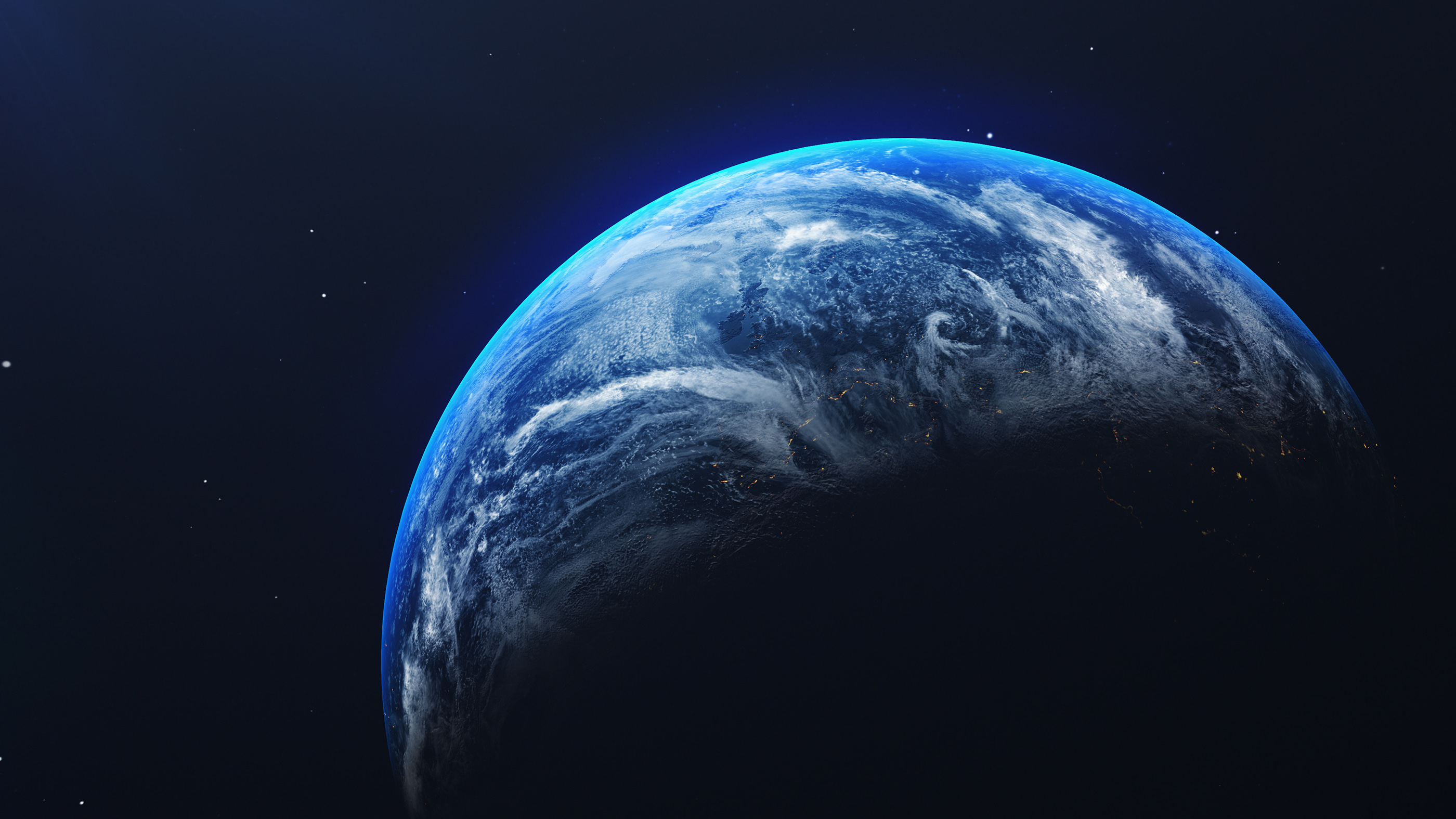Introduction: The Allure of the Blue Planet
The Earth, our celestial abode, is often affectionately referred to as the “Blue Planet.” This moniker is not merely poetic; it encapsulates a profound truth about our world’s appearance when observed from the vastness of space. In this exploration, we unravel the science behind why Earth earned its title, diving into the factors that paint our planet in hues of blue.
The Cosmic Palette: Earth’s Striking Appearance

An Overview of Earth’s Colors
When viewed from space, Earth exhibits a breathtaking array of colors, but it is the dominant blue hue that captures the imagination. This striking appearance is primarily a result of the interplay between sunlight, the Earth’s atmosphere, and the vast expanses of water that adorn its surface.
Human Perception and Symbolism
The choice of the term “Blue Planet” is not solely rooted in scientific accuracy. It also reflects a collective human perception that associates the color blue with calmness, serenity, and the life-giving properties of water. This symbolism transcends scientific explanations, resonating with our innate connection to the planet.
The Water Canvas: Oceans, Seas, and Lakes

Oceans: The Dominant Blue Reservoirs*
The oceans, covering about 71% of Earth’s surface, play a pivotal role in the planet’s overall coloration. Water has a unique property of selectively absorbing and scattering light, and it is this interaction that gives rise to the vibrant blue tones when sunlight penetrates the ocean depths.
Seas and Lakes: Blue Hues on Land*
While oceans are the primary contributors, the presence of smaller bodies of water, such as seas and lakes, also adds to the overall blue palette. The reflection and absorption of sunlight by these water bodies contribute to the visual spectacle that defines Earth’s appearance from afar.
Atmospheric Alchemy: Rayleigh Scattering and Blue Skies

The Essence of Rayleigh Scattering*
Earth’s atmosphere, composed mainly of nitrogen and oxygen, serves as a canvas for the celestial spectacle. The phenomenon of Rayleigh scattering, named after the British scientist Lord Rayleigh, is the key to the mesmerizing blue skies. Shorter wavelengths of light, particularly blue, are scattered more effectively by the molecules in the atmosphere.
Daytime Drama: The Sunlit Symphony*
During the day, sunlight entering the Earth’s atmosphere encounters the scattering effect, creating a kaleidoscope of colors. However, the shorter wavelengths, primarily blue, dominate the scattered light, enveloping the planet in a vibrant blue cloak when viewed from space.
Earth’s Twin: The Moon’s Gray Canvas

Contrasting Lunar Landscape*
A brief comparison with our celestial neighbor, the Moon, highlights the unique attributes of Earth’s appearance. The Moon, with its lack of a significant atmosphere and bodies of water, lacks the dynamic interplay that paints Earth in shades of blue. Instead, the Moon’s surface, comprised of grayish regolith, reflects sunlight in a distinctly different manner.
The Significance of Atmosphere and Water*
Earth’s blue allure underscores the role played by its atmosphere and water bodies in shaping its visual identity. The combination of a vibrant atmosphere and vast expanses of water sets our planet apart in the cosmic tapestry.
Climate Symphony: Oceans and Atmospheric Currents
Oceanic Currents: A Dance of Temperature and Salinity*
Beyond the aesthetic charm, Earth’s oceans contribute significantly to the planet’s climate dynamics. Oceanic currents act as conveyor belts, redistributing heat around the globe. The varying temperatures and salinity levels create a dynamic interplay that regulates the Earth’s climate, influencing weather patterns and atmospheric circulation.
Atmospheric Regulation: The Greenhouse Effect*
The atmosphere, while contributing to the blue appearance of the sky, also plays a crucial role in maintaining Earth’s temperature. The greenhouse effect, caused by certain gases trapping heat, ensures a habitable climate by preventing excessive heat loss into space.
Life in Blue: Biodiversity and Ecosystems
Oceans: A Biodiversity Hotspot*
The oceans, with their vastness and diversity of ecosystems, host a plethora of life forms. From microscopic phytoplankton to colossal whales, marine life contributes to the planet’s overall biodiversity. The vibrant hues of coral reefs add a colorful tapestry to the blue expanse.
Adaptations to Blue Environments*
Life on Earth has evolved and adapted to the blue surroundings. Aquatic species exhibit a spectrum of adaptations, from the bioluminescence of deep-sea creatures to the migratory patterns of marine animals. The interconnectedness of these adaptations forms a complex web of life that thrives in the blue embrace of the planet.
Human Impact: Balancing Acts and Conservation Efforts
Human Influence on the Blue Planet*
As custodians of the Blue Planet, human activities have left indelible marks. Issues such as plastic pollution, overfishing, and climate change pose threats to the delicate balance of marine ecosystems. Recognizing our impact is crucial in steering towards sustainable practices.
Conservation Initiatives: Safeguarding the Blue Legacy*
In response to environmental challenges, global conservation initiatives aim to protect the oceans and marine life. Marine reserves, sustainable fishing practices, and climate mitigation efforts form part of a collective endeavor to preserve the rich biodiversity and ensure the longevity of the Blue Planet.
Conclusion: A Tapestry of Blue Wonders
In the final analysis, the designation of Earth as the “Blue Planet” is more than a mere color description. It encapsulates the intricate interplay of water, atmosphere, and life that renders our world a unique gem in the cosmic sea. As we marvel at the blue expanse from afar, let us also embrace the responsibility to safeguard this precious canvas of life, ensuring that the Blue Planet continues to inspire wonder for generations to come.
